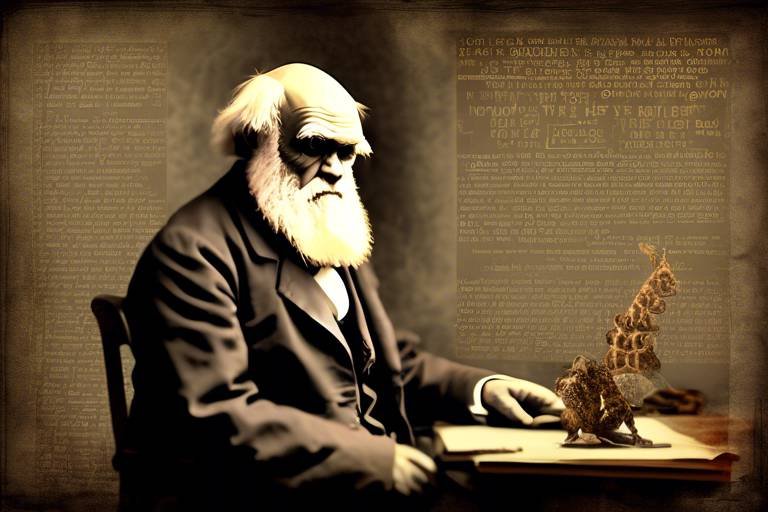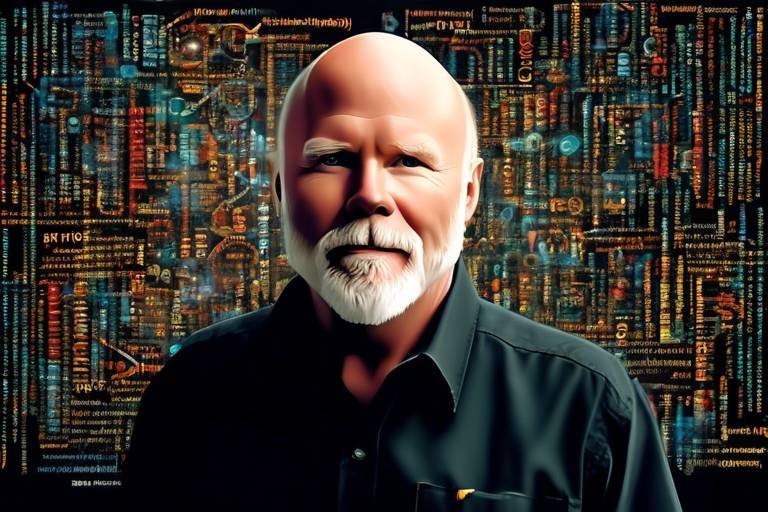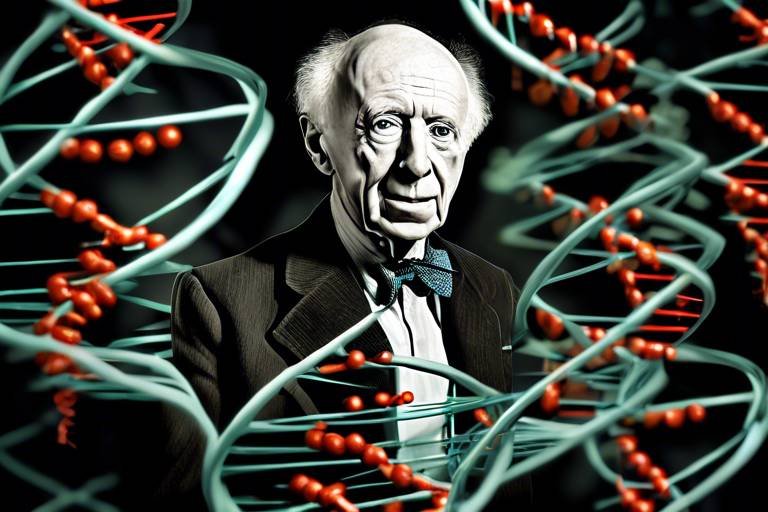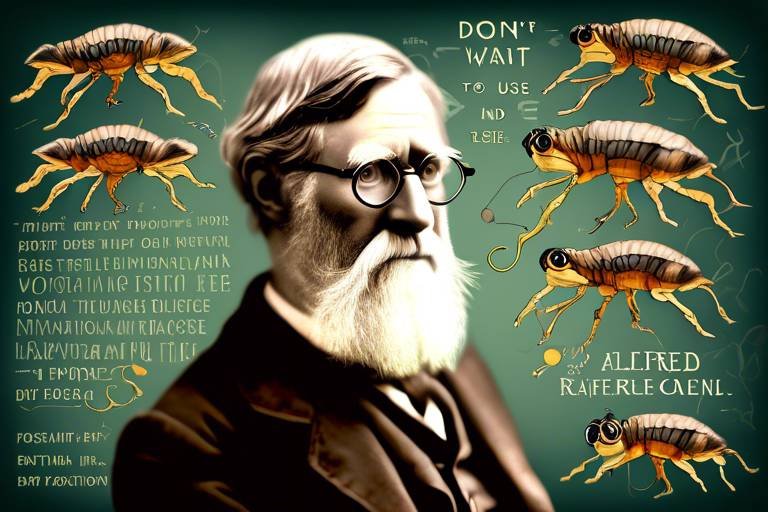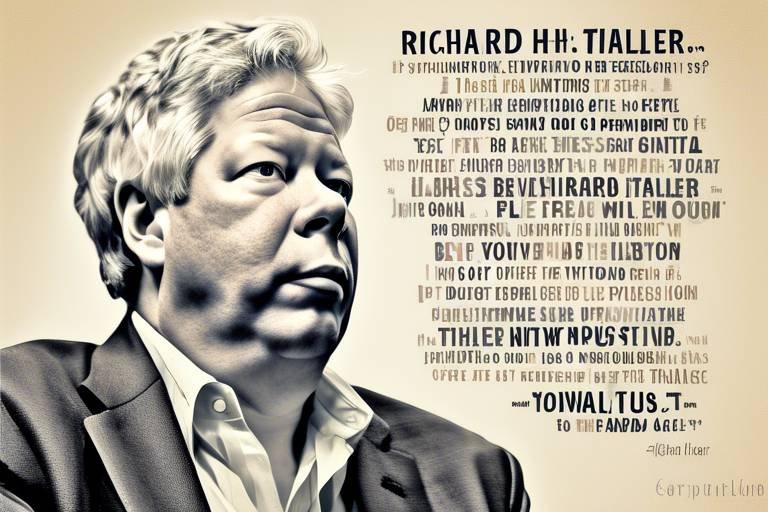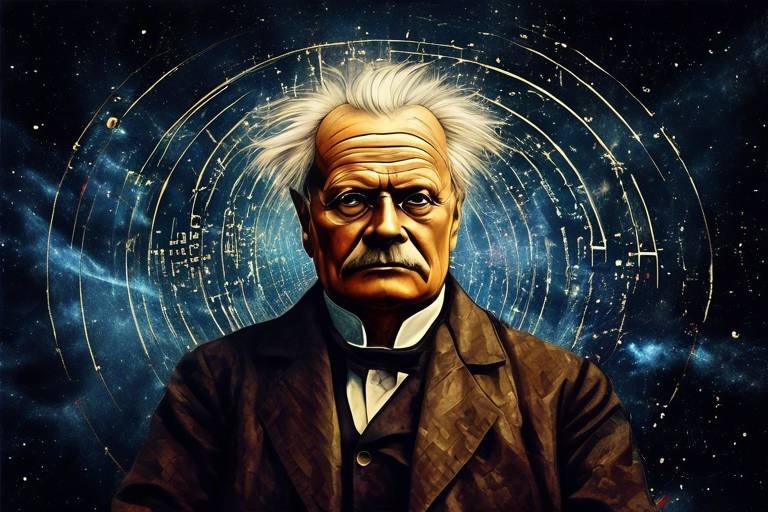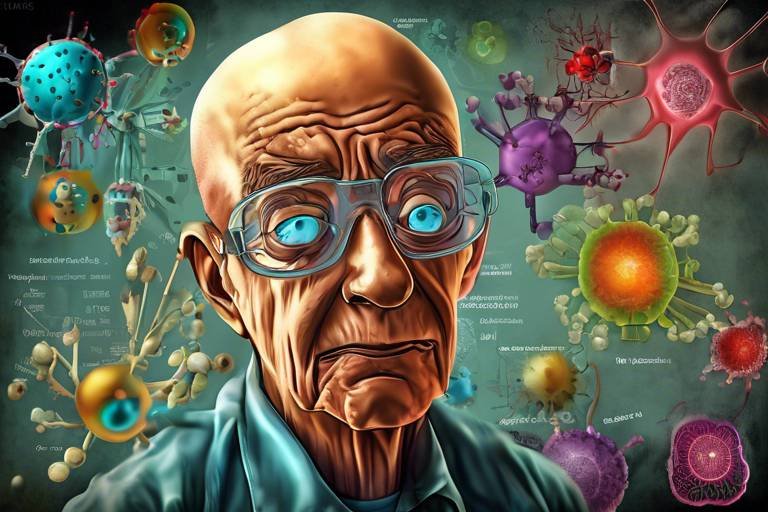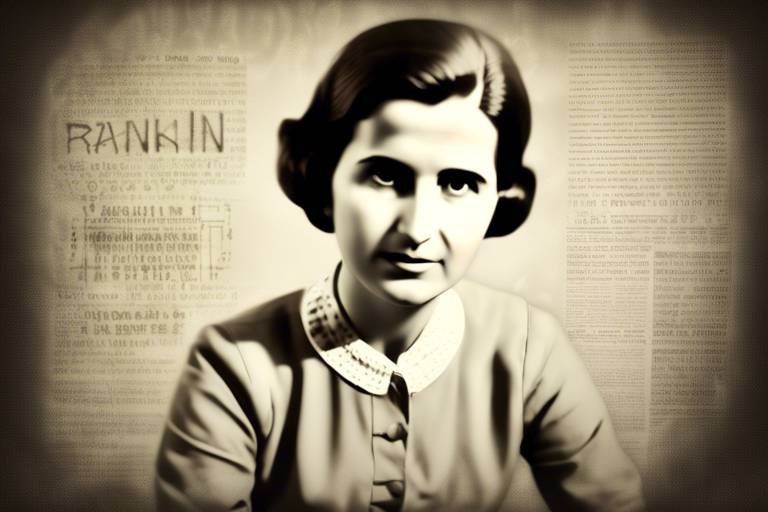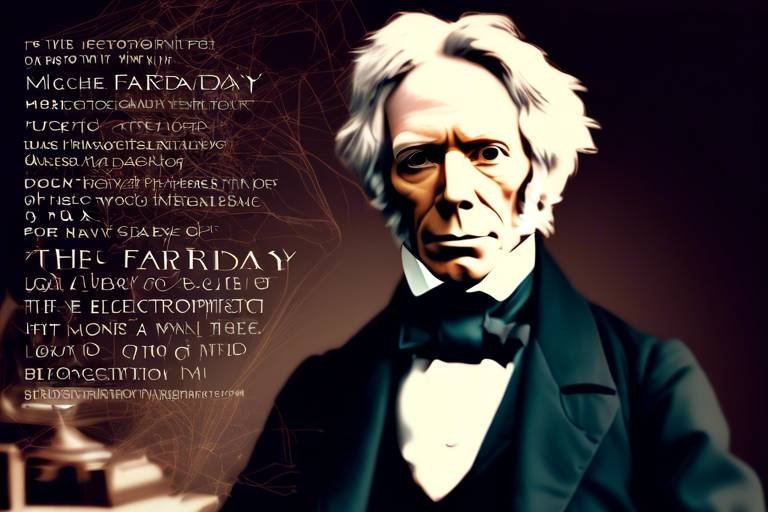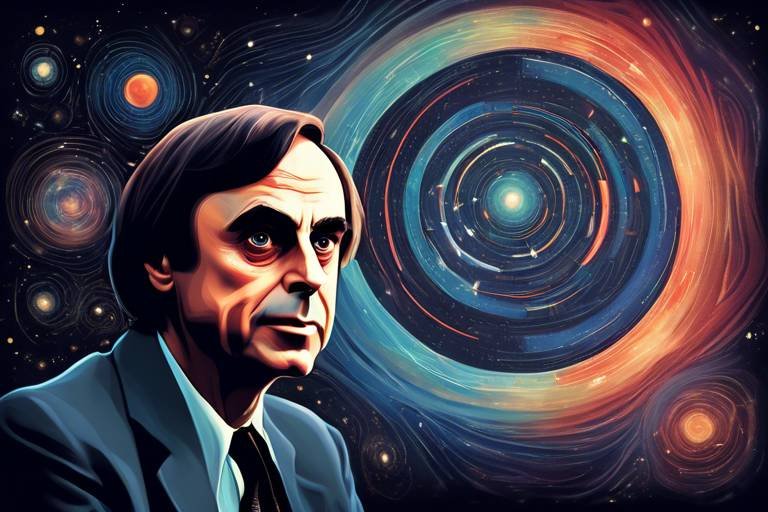The Discoveries of Erwin Schrödinger in Quantum Physics
When we think about the world of physics, it's hard not to be amazed by the revolutionary ideas that have reshaped our understanding of the universe. One name that stands out in this realm is Erwin Schrödinger, a physicist whose work in the early 20th century laid the groundwork for modern quantum mechanics. His contributions are not just footnotes in history; they are the very fabric of how we comprehend the behavior of particles at a quantum level. So, what exactly did Schrödinger discover that changed the game? Let's dive into his groundbreaking contributions, starting with his infamous wave equation.
Schrödinger's wave equation is often hailed as a cornerstone of quantum mechanics. Imagine trying to describe the motion of a car using only a simple line on a graph—it's inadequate, right? Schrödinger took this concept to the next level by introducing a mathematical framework that captures the essence of particles behaving like waves. This wasn't just a stroke of genius; it was a complete paradigm shift. The wave equation allows us to calculate the wave functions of particles, which describe their probability distributions rather than definite positions. This idea is mind-boggling because it suggests that particles can be found in various places at once, a concept that challenges our classical intuitions.
But what does this mean in practical terms? Enter the principle of quantum superposition. Schrödinger's work revealed that particles do not have a single, fixed state. Instead, they can exist in multiple states simultaneously. Picture a spinning coin; while it's in the air, it isn't just heads or tails but a blend of both until it lands. This principle is not just theoretical; it leads us to profound implications in quantum theory, where the act of measurement becomes a pivotal moment that determines the state of a particle.
To illustrate this concept further, Schrödinger devised a thought experiment that has become legendary: Schrödinger's Cat. Imagine a cat in a sealed box with a radioactive atom that has a 50% chance of decaying. If it decays, a poison is released, killing the cat; if it doesn't, the cat remains alive. Until we open the box, the cat is considered both alive and dead—a true embodiment of superposition. This paradox not only highlights the strange nature of quantum mechanics but also raises questions about the role of observation in determining reality. Are we merely observers, or do we participate in creating the state of existence?
The implications of Schrödinger's Cat extend far beyond a mere thought experiment. They challenge our understanding of reality itself. When we measure a quantum state, we seem to influence the outcome. This leads to debates about the nature of existence and the observer's role in the quantum world. Are we shaping reality, or is reality independent of our observations? These questions linger in the minds of physicists and philosophers alike, pushing the boundaries of what we know.
Schrödinger's thought experiment has inspired a variety of philosophical interpretations concerning determinism, reality, and consciousness. Some argue that if particles can exist in multiple states, then perhaps our understanding of free will is flawed. Others ponder the implications for consciousness itself: does the act of observation require a conscious observer? These discussions have not only influenced the field of physics but have also permeated philosophical discourse, creating a rich tapestry of ideas that continue to evolve.
Beyond his theoretical contributions, Schrödinger's insights into wave mechanics significantly advanced our understanding of atomic theory. His work provided a clearer picture of how electrons behave within atoms, propelling the development of quantum chemistry. This was akin to finding a new lens through which to view the microscopic world, revealing intricate details about atomic interactions and bonding that were previously obscured.
Schrödinger didn't work in isolation; he collaborated with contemporaries like Werner Heisenberg and Paul Dirac, which was crucial in establishing quantum mechanics as a unified theory. These collaborations fostered advancements in both theoretical physics and experimental techniques, creating a community of thinkers who collectively pushed the boundaries of knowledge.
His discoveries also laid the groundwork for quantum field theory, which merges quantum mechanics with special relativity. This combination has shaped our understanding of fundamental forces and particles in the universe, revealing a complex interplay that governs everything from the behavior of subatomic particles to the formation of galaxies.
As we look to the future, the legacy of Schrödinger's work continues to resonate. His ideas have inspired new research in fields like quantum computing and information theory, where the principles of quantum mechanics are applied to create technologies that were once the stuff of science fiction. The ongoing quest to unify quantum mechanics with general relativity remains a tantalizing challenge, one that Schrödinger's insights have undoubtedly influenced.
- What is Schrödinger's wave equation?
It is a fundamental equation in quantum mechanics that describes how the quantum state of a physical system changes over time. - What does quantum superposition mean?
It refers to the ability of a quantum system to exist in multiple states at once until it is measured. - What is the significance of Schrödinger's Cat?
This thought experiment illustrates the strange nature of quantum mechanics and the role of the observer in determining the state of a system. - How did Schrödinger influence atomic theory?
His work on wave mechanics provided a deeper understanding of electron behavior, leading to advancements in quantum chemistry.

Schrödinger's Wave Equation
When we talk about quantum mechanics, one name that inevitably pops up is Erwin Schrödinger. His groundbreaking work led to the formulation of the wave equation, a mathematical masterpiece that transformed our understanding of the microscopic world. Imagine trying to predict the unpredictable—this was Schrödinger's challenge, and he tackled it head-on by introducing a framework that allowed physicists to describe the behavior of particles at a quantum level.
The essence of Schrödinger's wave equation is that it provides a way to calculate the wave function of a quantum system. This wave function is not just a fancy term; it represents the probability of finding a particle in a particular state or location. To put it simply, if classical physics is like trying to predict the trajectory of a ball being thrown, quantum mechanics is akin to trying to predict where a photon might land when it behaves like a wave. The equation itself is typically expressed as:
iħ ∂ψ/∂t - (ħ²/2m) ∇²ψ + Vψ
In this equation, ψ (psi) represents the wave function, ħ is the reduced Planck's constant, and V is the potential energy. The beauty of this equation lies in its ability to describe particles not as discrete entities but as waves that can interfere, overlap, and exist in multiple states simultaneously. This revolutionary idea was a major departure from the classical view of particles as solid, well-defined objects.
One of the most fascinating implications of Schrödinger's wave equation is the concept of quantum superposition. It tells us that a particle can be in a combination of states at the same time until it is measured. Think of it like a spinning coin—while it's in the air, it's both heads and tails until it lands. This principle not only challenges our classical intuition but also opens up a Pandora's box of questions about the nature of reality itself.
Moreover, Schrödinger's work didn't just stop at theoretical implications. His wave equation laid the groundwork for practical applications in various fields. For instance, in quantum chemistry, it helps scientists understand how electrons behave in atoms, leading to advancements in materials science and nanotechnology. The wave equation is the foundation upon which many modern technologies, like semiconductors and lasers, are built.
In summary, Schrödinger's wave equation is not merely a mathematical tool; it is a lens through which we can view the quantum world. It has reshaped our understanding of matter and energy, and its implications continue to resonate through the halls of modern physics. As we delve deeper into the quantum realm, we realize that Schrödinger's insights are not just historical footnotes but are essential to our ongoing exploration of the universe.
- What is the significance of Schrödinger's wave equation?
It revolutionized quantum mechanics by providing a mathematical framework to describe the behavior of particles at the quantum level. - How does the wave function relate to particle behavior?
The wave function represents the probability of finding a particle in a particular state or location, allowing for predictions about its behavior. - What is quantum superposition?
It is the principle that particles can exist in multiple states simultaneously, challenging classical physics.

Quantum Superposition
When we dive into the fascinating world of quantum physics, one of the most mind-bending concepts we encounter is . Imagine a world where a coin can be both heads and tails at the same time until you take a peek at it. This is precisely what quantum superposition proposes for particles! In classical physics, we are used to thinking of objects as being in one state or another. However, Schrödinger's groundbreaking work challenges this notion, suggesting that particles can exist in multiple states simultaneously. This revolutionary idea not only reshaped our understanding of the microscopic world but also opened the door to a plethora of technological advancements.
At its core, quantum superposition means that a quantum system—like an electron—can be in a combination of different states. For example, an electron in an atom can exist in various energy levels at once. It's as if the electron is playing a game of hide and seek, darting between these energy levels, only choosing a specific one when we measure it. This phenomenon is beautifully captured in Schrödinger's wave function, which mathematically describes the probabilities of finding a particle in various states. The wave function can be thought of as a symphony, where each note represents a possible state, and the entire composition plays out until the moment of observation.
What’s even more intriguing is how quantum superposition leads us to the famous Schrödinger's Cat thought experiment. Picture this: a cat is placed in a sealed box with a radioactive atom, a Geiger counter, and a vial of poison. If the atom decays, the Geiger counter triggers, releasing the poison and killing the cat. Until we open the box and observe the cat, it is said to be both alive and dead simultaneously. This paradox illustrates the bizarre implications of superposition and measurement in quantum mechanics. It raises profound questions about reality, observation, and what it means for something to exist.
In practical terms, quantum superposition is the foundation for emerging technologies like quantum computing. Unlike classical computers that use bits as the smallest unit of data (0s or 1s), quantum computers utilize qubits, which can represent both 0 and 1 at the same time due to superposition. This ability allows quantum computers to process vast amounts of data simultaneously, offering the potential for breakthroughs in fields ranging from cryptography to drug discovery.
As we continue to explore the implications of quantum superposition, we find ourselves at the intersection of science and philosophy. The idea that particles can exist in multiple states simultaneously challenges our traditional understanding of reality. It compels us to reconsider the role of the observer in the universe and whether our consciousness plays a part in shaping the reality we perceive. Such questions are not merely academic; they touch on the very nature of existence and our place within it.
In conclusion, quantum superposition is not just a theoretical concept; it is a revolutionary idea that has far-reaching implications in both science and technology. As we unravel the mysteries of the quantum realm, we are reminded of the profound complexity of the universe and the wonders that lie within it.
- What is quantum superposition? Quantum superposition is the principle that a quantum system can exist in multiple states at the same time until it is measured.
- How does Schrödinger's Cat illustrate quantum superposition? The thought experiment shows that until observed, a cat in a sealed box can be considered both alive and dead, representing the paradox of superposition.
- What are the practical applications of quantum superposition? Quantum superposition is fundamental to technologies like quantum computing, which can process information more efficiently than classical computers.
- What philosophical questions does quantum superposition raise? It challenges our understanding of reality, the role of the observer, and the nature of existence itself.

Schrödinger's Cat Thought Experiment
Imagine a scenario where a cat is placed inside a sealed box along with a radioactive atom, a Geiger counter, a vial of poison, and a hammer. The setup is such that if the Geiger counter detects radiation (which happens randomly), it triggers the hammer to break the vial of poison, ultimately leading to the cat's demise. If no radiation is detected, the cat remains alive. Now, here’s the kicker: until we open the box and observe the situation, the cat is considered to be both alive and dead at the same time. This thought experiment, famously devised by Erwin Schrödinger in 1935, vividly illustrates the perplexing nature of quantum mechanics and the principle of quantum superposition.
At its core, Schrödinger's Cat challenges our intuition about reality. It forces us to confront the bizarre implications of quantum theory, where particles can exist in multiple states until they are measured. This paradox not only highlights the strangeness of quantum mechanics but also raises profound questions about the act of observation itself. What does it mean to measure something? Is the act of observation enough to determine the state of a system? These questions echo through the halls of science and philosophy, prompting debates that extend far beyond the realm of physics.
The thought experiment also serves as a metaphor for the broader implications of quantum mechanics in our understanding of reality. It suggests that the universe at a quantum level is not as straightforward as we might like to believe. Instead, it operates on principles that defy classical logic. To illustrate this further, let’s consider some key points:
- Superposition: Until observed, the cat exists in a state of superposition, embodying both life and death.
- Observer Effect: The act of observing the cat alters its state, collapsing the superposition into one definitive outcome.
- Philosophical Implications: The thought experiment invites discussions about reality, consciousness, and the nature of existence.
Schrödinger's Cat not only serves as a philosophical puzzle but also as a crucial touchstone for understanding the implications of quantum mechanics. It invites us to ponder the nature of reality and the limits of our knowledge. As we delve deeper into the quantum realm, we find ourselves grappling with questions that challenge our perceptions and understanding of the universe. In essence, Schrödinger's Cat remains a fascinating symbol of the mysteries that lie at the intersection of observation, reality, and the fundamental laws of nature.
What is the significance of Schrödinger's Cat?
Schrödinger's Cat is significant because it illustrates the concept of superposition in quantum mechanics and raises questions about the role of the observer in determining the state of a quantum system.
Does Schrödinger's Cat mean that cats can be both alive and dead?
No, the thought experiment is a metaphorical illustration. In reality, a cat cannot be both alive and dead; it's meant to demonstrate the complexities of quantum mechanics.
How does this thought experiment impact our understanding of reality?
The thought experiment challenges our classical understanding of reality and suggests that at a quantum level, things can exist in multiple states until observed, leading to philosophical implications about existence and consciousness.

Implications for Measurement
When we dive into the implications of Schrödinger's Cat, we're not just scratching the surface of quantum mechanics; we're plunging into the very fabric of reality itself. This thought experiment, which presents a cat that is simultaneously alive and dead until observed, raises profound questions about the role of measurement in quantum physics. It forces us to confront the idea that our observations might actually influence the state of a system. Imagine peeking into a box to find out if your friend is still in a game of hide and seek; the moment you look, you change the game entirely!
In quantum mechanics, measurement is not a passive act. Rather, it is an active process that determines the state of a particle. Before measurement, a particle exists in a superposition of states, akin to a spinning coin that is both heads and tails at the same time. Only when we observe that particle does it 'choose' a state, collapsing the wave function into a definite outcome. This phenomenon has sparked debates among physicists and philosophers alike, leading to various interpretations of quantum mechanics.
To further illustrate these implications, consider the following points:
- Observer Effect: The act of measurement can alter the state of a quantum system. This suggests that reality is not as objective as we once thought.
- Determinism vs. Indeterminism: If measurement influences outcomes, does this mean that the universe is fundamentally indeterminate? Or is there some hidden variable we have yet to discover?
- Reality of Quantum States: Are quantum states real entities, or are they merely tools for predicting outcomes? This question challenges our understanding of existence itself.
Schrödinger's exploration of measurement has not only influenced theoretical physics but has also permeated other fields, such as philosophy and cognitive science. The implications stretch far beyond the laboratory, inviting us to reflect on our understanding of reality, consciousness, and the universe. As we continue to unravel the mysteries of quantum mechanics, it becomes clear that the act of measurement is not just a technical detail; it is a fundamental aspect of the nature of existence.
- What is Schrödinger's Cat thought experiment? It is a famous thought experiment that illustrates the concept of quantum superposition, where a cat is both alive and dead until observed.
- How does measurement affect quantum states? Measurement causes the wave function to collapse, determining the state of a quantum system at the moment of observation.
- What are the philosophical implications of Schrödinger's work? His work raises questions about the nature of reality, the role of the observer, and the determinism of the universe.

Philosophical Interpretations
Erwin Schrödinger's thought experiment, famously known as Schrödinger's Cat, has sparked a myriad of philosophical interpretations that delve deep into the nature of reality and existence. At its core, the experiment challenges our understanding of determinism and free will. Imagine a cat that is both alive and dead, trapped in a box with a radioactive atom that may or may not decay. This scenario raises profound questions: What does it mean to "observe"? Is reality dependent on our observation, or does it exist independently of our perception?
One of the most compelling philosophical debates stemming from Schrödinger's work is the nature of consciousness itself. If particles can exist in multiple states until measured, does this imply that consciousness plays a critical role in shaping reality? Some philosophers argue that this suggests a level of interconnectedness between observer and observed, hinting that our minds might influence the physical world around us.
Furthermore, Schrödinger's insights have led to discussions about the implications of quantum mechanics on our understanding of time and space. Traditional views of time as linear and absolute are challenged by the idea that at a quantum level, events might not follow the same rules. This opens up a Pandora's box of philosophical inquiries about the nature of existence: Are past, present, and future merely constructs of human perception?
To illustrate the various interpretations, consider the following table that summarizes some of the key philosophical perspectives influenced by Schrödinger's thought experiment:
| Philosophical Perspective | Description |
|---|---|
| Realism | Argues that reality exists independently of observation, opposing the idea that consciousness influences physical states. |
| Idealism | Posits that reality is fundamentally mental, suggesting that consciousness shapes what we perceive as reality. |
| Determinism | Holds that all events, including human actions, are determined by preceding events in accordance with the laws of nature. |
| Indeterminism | Suggests that not all events are determined, allowing for the possibility of free will and randomness in quantum events. |
As we ponder these philosophical interpretations, it becomes clear that Schrödinger's work transcends the boundaries of physics, inviting us to question the very fabric of reality. The implications of his thought experiment resonate not only in the realm of science but also in our everyday lives, as we grapple with the nature of existence, consciousness, and the universe itself. Ultimately, Schrödinger's contributions act as a bridge between science and philosophy, encouraging a dialogue that continues to evolve as we delve deeper into the mysteries of the quantum world.
- What is Schrödinger's Cat? Schrödinger's Cat is a thought experiment that illustrates the concept of superposition in quantum mechanics, where a cat in a box can be simultaneously alive and dead until observed.
- How does Schrödinger's work influence modern physics? His contributions laid the groundwork for quantum mechanics and have implications for fields such as quantum computing and quantum field theory.
- What are the philosophical implications of quantum mechanics? Quantum mechanics raises questions about the nature of reality, consciousness, and the role of the observer in determining physical states.
- Can quantum mechanics and classical physics coexist? While they describe different realms of physics, ongoing research seeks to unify the principles of quantum mechanics with classical theories.

Contributions to Atomic Theory
Erwin Schrödinger's contributions to atomic theory are nothing short of revolutionary. His innovative approach to understanding the behavior of electrons within atoms significantly changed the landscape of modern physics. Before Schrödinger, the classical view of the atom was largely based on fixed orbits, reminiscent of miniature solar systems. However, Schrödinger introduced a more nuanced perspective through his wave mechanics, which fundamentally altered our comprehension of atomic structure.
By applying his wave equation, Schrödinger provided a mathematical framework that describes how electrons behave as both particles and waves. This duality is essential for grasping the complexities of quantum mechanics. Instead of picturing electrons as tiny balls orbiting the nucleus, Schrödinger's model visualizes them as wave functions that describe probabilities of finding an electron in a particular region around the nucleus. This conceptual shift is akin to replacing a rigid blueprint of a house with a fluid, dynamic representation that can change with time and conditions.
One of the most significant implications of Schrödinger's work is the idea of electron clouds. These clouds represent areas where there is a high probability of finding an electron, rather than a defined path. This concept allows scientists to understand atomic interactions with greater accuracy and has led to the development of various applications in fields like chemistry and materials science. For example, the behavior of electrons in different atomic structures can now be predicted, leading to advancements in the creation of new materials and technologies.
Moreover, Schrödinger's wave mechanics paved the way for the field of quantum chemistry, which deals with the application of quantum mechanics to chemical systems. This has opened new doors for understanding chemical bonding, reaction mechanisms, and molecular interactions. The ability to predict how atoms will interact based on their quantum states is a game-changer, enabling chemists to design molecules with specific properties for pharmaceuticals, materials, and other applications.
In summary, Schrödinger's contributions to atomic theory not only enhanced our understanding of atomic structure but also laid the groundwork for numerous advancements in science and technology. His work exemplifies the profound impact that theoretical physics can have on practical applications, bridging the gap between abstract concepts and tangible innovations.
- What is Schrödinger's wave equation?
Schrödinger's wave equation is a fundamental equation in quantum mechanics that describes how the quantum state of a physical system changes over time. It is central to understanding the behavior of particles at the quantum level.
- How did Schrödinger's work change atomic theory?
Schrödinger's work introduced the concept of wave functions, allowing for a probabilistic interpretation of electron behavior rather than fixed orbits, which fundamentally altered atomic theory.
- What is quantum chemistry?
Quantum chemistry is the branch of chemistry that applies quantum mechanics to study the behavior of atoms and molecules, providing insights into chemical bonding and molecular interactions.
- Why is Schrödinger's work still relevant today?
Schrödinger's contributions continue to influence modern physics and chemistry, particularly in areas such as quantum computing, materials science, and the ongoing quest to unify quantum mechanics with other physical theories.

Collaboration with Other Scientists
Erwin Schrödinger was not just a brilliant mind working in isolation; his contributions to quantum mechanics were deeply intertwined with the efforts of other prominent scientists of his time. This collaboration was pivotal in establishing quantum mechanics as a unified theory. One of the most notable figures he worked with was Werner Heisenberg, known for his uncertainty principle. Together, their discussions and debates shaped the foundational concepts of quantum theory, leading to a more comprehensive understanding of atomic behavior.
Moreover, Schrödinger's interactions with Paul Dirac were equally significant. Dirac's formulation of quantum mechanics offered a mathematical rigor that complemented Schrödinger's wave mechanics. Their collaboration exemplified how different perspectives can converge to enhance scientific understanding. Schrödinger's wave equation and Dirac's principles of quantum mechanics eventually led to the development of quantum field theory, which elegantly combines quantum mechanics with special relativity.
These collaborations were not merely academic; they were vibrant discussions that pushed the boundaries of what was known at the time. For instance, Schrödinger's ideas about wave functions sparked debates about the nature of particles and their behavior, leading to a richer dialogue in the scientific community. This exchange of ideas is crucial because it fosters innovation and helps scientists challenge existing paradigms. The synergy between Schrödinger and his contemporaries laid the groundwork for future advancements in theoretical physics, as they collectively addressed the mysteries of the quantum world.
In addition to Heisenberg and Dirac, Schrödinger's network extended to other notable scientists, such as Niels Bohr and Max Planck. Each of these figures brought unique insights that contributed to a more nuanced understanding of quantum phenomena. The collaboration among these scientists can be summarized in the following table:
| Scientist | Contribution | Collaboration Impact |
|---|---|---|
| Werner Heisenberg | Uncertainty Principle | Enhanced understanding of particle behavior and measurement limitations |
| Paul Dirac | Quantum Mechanics Formulation | Provided mathematical rigor, leading to quantum field theory |
| Niels Bohr | Complementarity Principle | Influenced discussions on wave-particle duality |
| Max Planck | Quantum Theory Foundations | Set the stage for quantum mechanics through black body radiation studies |
These collaborations were essential in pushing the boundaries of physics and expanding the horizons of scientific inquiry. By working together, Schrödinger and his contemporaries not only advanced quantum mechanics but also inspired generations of scientists to explore the unknown. Their legacy is a testament to the power of collaboration in science, reminding us that great discoveries often emerge from the collective efforts of brilliant minds.
- What is Schrödinger's most famous contribution to quantum mechanics? Schrödinger is best known for his wave equation, which describes how the quantum state of a physical system changes over time.
- How did Schrödinger's collaborations influence quantum mechanics? Collaborations with scientists like Heisenberg and Dirac helped establish a more comprehensive understanding of quantum mechanics, leading to significant advancements in the field.
- What is the significance of Schrödinger's Cat thought experiment? The thought experiment illustrates the concept of superposition and raises questions about the nature of observation and reality in quantum mechanics.

Influence on Quantum Field Theory
Erwin Schrödinger's contributions to quantum mechanics were not just revolutionary in their time; they laid the foundational stones for what we now understand as quantum field theory. This theoretical framework merges the principles of quantum mechanics with special relativity, fundamentally altering how we perceive the interactions of particles and forces in the universe. Before Schrödinger, the quantum world was largely viewed through the lens of particle mechanics, but his wave equation introduced a new perspective—one that treated particles as excitations in a field rather than discrete entities.
Imagine a calm lake. When you throw a stone into it, ripples spread across the surface, interacting with each other and creating a complex pattern. In a similar way, Schrödinger's wave function describes how particles behave as waves, creating a rich tapestry of interactions that can be analyzed mathematically. This shift in understanding allowed physicists to explore the behavior of particles at a fundamental level, leading to breakthroughs in how we conceive of forces like electromagnetism and gravity.
The implications of Schrödinger's work can be summarized in several key areas:
- Unification of Forces: Quantum field theory seeks to unify the fundamental forces of nature, including electromagnetism, weak nuclear force, and strong nuclear force, under one theoretical umbrella.
- Particle Creation and Annihilation: Schrödinger's framework allows for the understanding of how particles can be created and annihilated, a concept that is essential in high-energy physics.
- Virtual Particles: The theory introduces the idea of virtual particles, which are temporary fluctuations that occur in a field and can affect the interactions between real particles.
Furthermore, Schrödinger's influence is evident in the development of the Standard Model of particle physics, which describes the electromagnetic, weak, and strong nuclear interactions. His work provided the necessary tools for physicists to describe particles such as quarks and leptons and understand their interactions in a coherent way. The mathematical formalism he introduced continues to be a staple in the toolkit of modern physicists, enabling them to make predictions about particle behavior that have been experimentally validated countless times.
In summary, Erwin Schrödinger's influence on quantum field theory is profound and far-reaching. His pioneering ideas transformed our understanding of the microscopic world and continue to inspire research and discovery in physics today. As we delve deeper into the quantum realm, the legacy of Schrödinger serves as a reminder of the power of theoretical insights in shaping our comprehension of the universe.
- What is quantum field theory?
Quantum field theory is a framework that combines quantum mechanics and special relativity to describe how particles interact as excitations in fields. - How did Schrödinger contribute to quantum field theory?
Schrödinger introduced the wave equation, which treats particles as wave functions, fundamentally changing the approach to quantum mechanics and paving the way for quantum field theory. - What are virtual particles?
Virtual particles are temporary fluctuations in a quantum field that can influence the interactions between real particles, a concept that arises from quantum field theory.
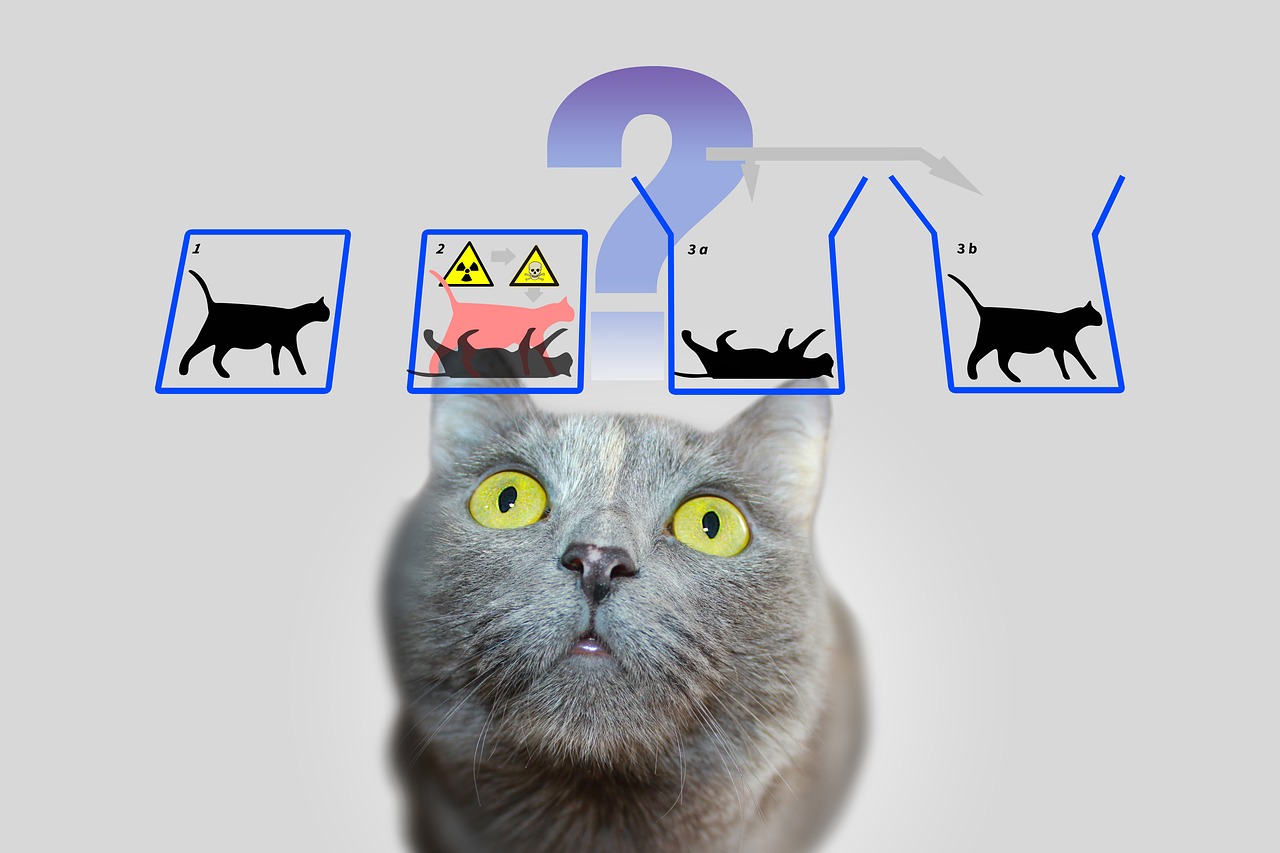
Legacy in Modern Physics
Erwin Schrödinger's contributions to quantum physics have left an indelible mark on the landscape of modern science. His work, particularly the formulation of the wave equation, not only reshaped our understanding of atomic and subatomic particles but also paved the way for revolutionary advancements in various fields. One of the most significant legacies of Schrödinger lies in the realm of quantum computing. This cutting-edge field harnesses the principles of quantum mechanics to perform calculations at speeds unimaginable with classical computers. Imagine a world where complex problems, such as drug discovery or cryptography, can be solved in mere seconds—this is the promise of quantum computing, and it owes much to Schrödinger's foundational theories.
Moreover, Schrödinger's insights have influenced the development of quantum information theory, which explores how quantum systems can be used to process and transmit information. The concept of quantum entanglement, which describes how particles can become interconnected regardless of distance, has opened new avenues for secure communication. In a world increasingly concerned with cybersecurity, the principles derived from Schrödinger's work offer a glimpse into the future of data protection.
The implications of Schrödinger's discoveries extend beyond technology and delve into the philosophical realm. His work has sparked discussions about the nature of reality and observation, challenging our fundamental understanding of existence. As scientists and philosophers grapple with questions of determinism and consciousness, Schrödinger's legacy serves as a catalyst for ongoing dialogue in both fields.
In the context of theoretical physics, Schrödinger's contributions laid the groundwork for the development of quantum field theory. This framework merges quantum mechanics with special relativity, providing a comprehensive understanding of fundamental forces and particles. The evolution of particle physics, particularly the Standard Model, can be traced back to the principles established by Schrödinger and his contemporaries.
To summarize, the legacy of Erwin Schrödinger is multifaceted, influencing not only the foundational aspects of quantum mechanics but also propelling advancements in technology, philosophy, and theoretical physics. His work continues to inspire researchers and thinkers, ensuring that the ripple effects of his discoveries will be felt for generations to come.
- What is Schrödinger's wave equation?
Schrödinger's wave equation is a mathematical formulation that describes how the quantum state of a physical system changes over time, providing insight into the behavior of particles at a quantum level.
- How did Schrödinger's work influence quantum computing?
Schrödinger's principles of quantum mechanics are foundational to quantum computing, enabling the development of algorithms and technologies that outperform classical computing methods.
- What is quantum superposition?
Quantum superposition is the principle that particles can exist in multiple states at the same time until they are observed, which challenges classical notions of certainty and reality.
- Why is Schrödinger's Cat important?
Schrödinger's Cat is a thought experiment that illustrates the paradoxes of quantum mechanics, particularly the implications of superposition and the role of the observer in determining the state of a system.
Frequently Asked Questions
- What is Schrödinger's wave equation?
Schrödinger's wave equation is a fundamental equation in quantum mechanics that describes how the quantum state of a physical system changes over time. It's like a recipe that tells us how particles behave at a quantum level, introducing the concept of wave functions, which are mathematical descriptions of the probabilities of finding particles in different states.
- What does quantum superposition mean?
Quantum superposition is a principle that states particles can exist in multiple states at the same time until they are measured. Imagine flipping a coin; until you look at it, it's both heads and tails. This idea challenges our classical understanding of physics and has profound implications for how we perceive reality.
- What is Schrödinger's Cat thought experiment?
Schrödinger's Cat is a famous thought experiment that illustrates the concept of superposition. In this scenario, a cat is placed in a sealed box with a mechanism that can kill it based on a random quantum event. Until the box is opened, the cat is considered to be both alive and dead simultaneously, raising questions about the role of observation in determining the state of a system.
- What are the implications of Schrödinger's Cat for measurement?
The implications of Schrödinger's Cat extend to the nature of reality and how we understand measurement in quantum mechanics. It suggests that the act of observation plays a crucial role in determining the state of a quantum system, leading to debates about the observer's role and the very nature of existence itself.
- How did Schrödinger contribute to atomic theory?
Schrödinger's work in wave mechanics significantly advanced atomic theory by providing insights into how electrons behave within atoms. His wave equation helped scientists understand electron configurations and interactions, paving the way for the development of quantum chemistry.
- Who did Schrödinger collaborate with?
Erwin Schrödinger collaborated with notable contemporaries like Werner Heisenberg and Paul Dirac. These collaborations were pivotal in establishing quantum mechanics as a unified theory, leading to advancements in theoretical physics and experimental techniques.
- What is the legacy of Schrödinger's work in modern physics?
Schrödinger's legacy continues to influence modern physics, inspiring new research in fields like quantum computing and information theory. His discoveries have laid the groundwork for ongoing efforts to unify quantum mechanics with general relativity, shaping our understanding of fundamental forces and particles in the universe.




